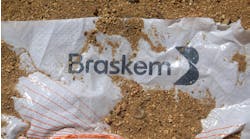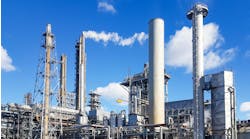September Process Puzzler: Fix a Fast Fouling Filter
This Month’s Puzzler
Our pressure filter suffers from excessive cake build-up. After a few hours we must tear down the filter so the media can be cleaned. As a result, the media often are damaged during the maintenance and must be replaced at considerable expense. Also, because of the extremely high pressure used, the operators must follow a strict procedure for switching the filters; a few accidents have occurred along with several near-misses. Although some caking is necessary for efficient filtering, it would be desirable to extend the running time. What do you suggest? Also, do you have any ideas on how we can lengthen media life or reduce operating costs?
Consider a precoatThere is some missing information — is the cake a product or valuable? At any rate, there are a number of pressure-type filters that could be used. If the cake is not a product then a filter aid such as diatomaceous earth or something compatible with the process can be precoated and fed at slow rate during operation to maintain open surface area so the filters do not plug. This approach is less likely to be applicable if the cake is a product or valuable.
If this is a plate-and-frame filter, filter paper could be helpful. Other possible solutions include pre-filters to take out coarser materials working down to finer filters to achieve the desired removal.
Finally, replacing the filter with an automatic self-cleaning filter would be an option. There are many varieties of these that will physically remove cake and drop it into a collector plenum in the filter from which it can be removed, usually with a rotary valve, while operating.
It is too bad that the filter operates at high pressure. At low pressure a moving belt or rotary filter with vacuum works well. This operation involves pulling the liquid through a filter belt or table by means of a liquid seal vacuum pump. Several vendors provide these.
Larry Cummings, senior engineer,
Project Management and Regulatory Affairs, Cedar City, Utah
There is not enough detail presented for an analysis. Our firm provides a range of filters from $1,000 bag filters to $1,000,000 plate-and-frame filters for refineries. I would need to ask at least 20 more questions. Then those answers would lead to 10 more questions. Then, the client would have something that would likely present a solution.
David Bowlin, president
Engineered Products & Services, Inc., Sammamish, Wash.
The most obvious solution is to install a pre-filter, if one does not exist already. If there is a pre-filter try reducing the mesh. However, this could move the filter problem to the pre-filter. Perhaps a solution is to increase the size of the filter, say, from 3-in. to 6-in.; the surface area increases in linear proportion to the diameter. This could work for the main filter as well. If the filter fabric fouls another solution may be to maximize the mesh size. I’ve read somewhere in a brochure that the maximum particle size that can be captured by a filter media is 50µ. Below this size a cartridge filter is required. The best way to find a solution is via laboratory tests with a series of filter media, starting with filter papers. Eventually you will discover the coarsest mesh or paper that will do the job. That is the one you are stuck with.
As for mechanics breaking the filter sacks during removal, maybe somebody makes a rigid filter less prone to damage than a limp sack?
The high pressure is a safety problem to be sure. If the process contains hazardous chemicals and the area around the filters is congested the filters could pose an unnecessary risk. There are a few solutions worth attempting: flange covers, an enclosure with automatic valves and eliminating quarter turn valves that could cause water hammer and thus result in a pipe leak.
Dirk Willard, senior process engineer
Ambitech Engineering, Hammond, Ind.
A batch process that consists of a series of feed tanks for a fluidized rotary dryer relies on pH probes to control product quality (Figure 1). There are two steps: pH adjustment, then chemical addition. The pH is adjusted from 1.0 to about 6.5. If the pH is too low, the acid bound to the solid will corrode the dryer and the customer’s equipment. Also, low or high pH will cause a problem with another ingredient added to the customer’s product. Unfortunately, we can’t depend on the probes. They suffer from slow response, especially with negative drops, for example, from 1.0 to 1.1. Also, because of poor residence time in the process, some chemicals added during the pH adjustment have caused problems such as silicon gelling of the probes (in acid solution). The quality assurance department is convinced that we should be able to meet our customer’s needs if we can achieve an accuracy of 0.25 pH, i.e., both probes agreeing that closely. The pH probes last about a week with some product runs and only a few hours with others. Can you suggest improvements in this process or how it’s controlled?
Send us your comments, suggestions or solutions for this question by October 10, 2008. We’ll include as many of them as possible in the November 2008 issue and all on CP.com. Send visuals — a sketch is fine. E-mail us at [email protected] or mail to ProcessPuzzler, Chemical Processing, 555 W. Pierce Road, Suite 301, Itasca, IL 60143. Fax: (630) 467-1120. Please include your name, title, location and company affiliation in the response.
And, of course, if you have a process problem you’d like to pose to our readers, send it along and we’ll be pleased to consider it for publication.

